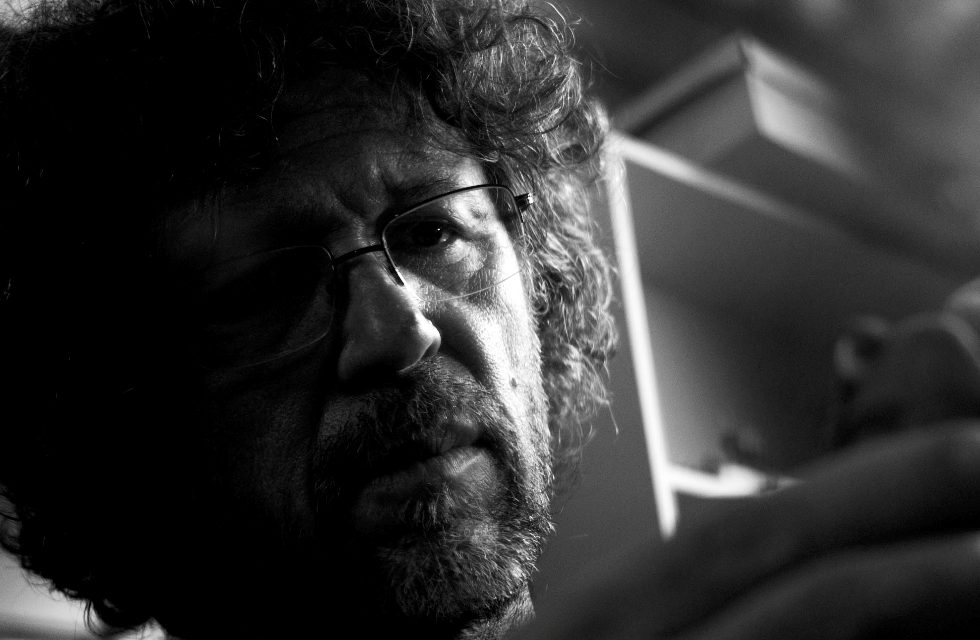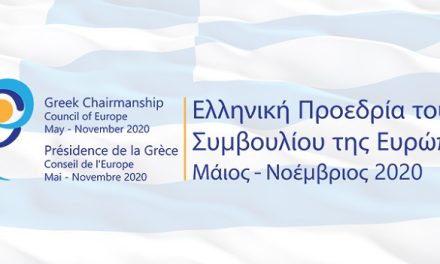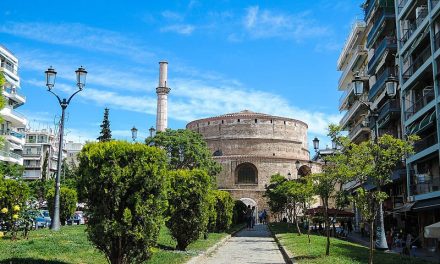Award winning short stop motion animation film “Ethnophobia”, directed and animated by Joan Zhonga, is a humorous depiction of humankind’s intolerance of the Other.
Joan Zhonga is an animation director specialising in stop motion animation with puppets and plasticine. He’s a graduate of the Academy of Fine Arts in Tirana and has more than 35 years of experience in animation. During his career he’s directed 13 animation films that have been screened and awarded in many international film festivals such as Annecy, Hiroshima, Giffonni and Fantoche. In 2006 he collaborated with the master of children’s books, Eugenios Trivizas, in the film “The two waves” (2006), produced by ERT. His latest film, “Ethnophobia” (2016), has been so far screened in 130 festivals, including the Manchester Kinofilm Festival (18-26 November), and won 23 awards.
In an interview published in the November issue of the Newsletter of the Press and Communication Office of the Embassy of Greece in London Joan Zhonga talks about “Ethnophobia”, stressing that it is a film against racism pinpointing in a lighthearted and funny way that people have to focus on what connects them. He comments that in the past few years there has been a rise in the production of animation films in Greece and underlines the contribution of the Greek animation association ASIFA Hellas in supporting the works of Greek artists.
How did you start doing animation? Why did you choose to use plasticine in your films?
I have to admit I’ve been very blessed in my life. In August of 1981 I had just graduated from the Academy of Fine Arts and was offered a job at the animation department of the Film Studios of Tirana. My first day at the studio, they gave me a script and told me I had to make a short animation film. You can imagine my surprise as I’ve never made an animation film before! Things were much different back then, you had to discover on your own how animation worked and it took a lot of effort, time and patience to make a film. It took me a year to complete my first project and I haven’t stopped ever since.
Throughout my 36 years of experience I’ve used various animation techniques in my films, paper cut-outs, puppets as well as 2D and 3D animation. When I came to Greece in 1990, nobody was making films using plasticine. So I thought it was a good way to make something different and distinguish myself from other animators. Since then I’ve stuck with plasticine and clay as it’s cost effective and a material which allows you to change the shapes of objects on the spot. The animator has a unique relationship with plasticine, you can see your fingerprints on the characters and it has a more real feel to it. You can also be very creative with it and it’s a material children recognize and can connect to.
What is the public’s response to animation compared to live action films? Do you feel that animation enables an artist to reach younger audiences?
I believe the public can connect to animation more easily than live action films. It doesn’t matter how old you are, you could be 5 years old or 60, it still has the same magic to it. Let’s not forget it’s the only medium where real life objects come to life and where animals can speak! Whether you are creating an experimental animation or a film with a narrative, it has a universal appeal and people from around the world will have the same response to it no matter what language they speak. That’s why animation is so popular with kids and younger audiences in general. It’s also a great way for artists to communicate important messages in a more simplistic way.
What is Ethnophobia about? What were the origins of this film?
For me Ethnophobia is a voice against racism. It’s a film about human relations and how survival, clash and symbiosis go side by side and how people focus more on their differences than what connects them. It explains, in a very easy way, xenophobia and the phenomenon of exclusion in modern society.
The idea was developed 10 years ago with the help of the scriptwriter, Petros Koskinas. We wanted to make a film that was a criticism on racism and the constant struggle of people nowadays where everybody is trying to overpower each other. We saw how man is constantly trying to show his superiority against other people by making them feel small and by making this film was our way of doing something about it. You can see in the end of the film that we are the ones creating the differences, in reality we are all the same.
You have lived both in Albania and Greece. How has your personal experience of migration influenced your perspective on life and your art?
Anyone that has been an immigrant knows that life in a new place isn’t easy. I left the place where I was born and lived for over 30 years to come to my mother country and it was definitely a big and difficult transition. As you would expect, I experienced some incidents of racism and I had to work twice as hard to prove my worth but I never let anything put me down. I think the most important thing in life is to learn from every experience and to see things in a positive way. Being an immigrant gives you a different perspective in life and makes you see past the surface. And that’s what I try to do through my art and especially with my latest film, Ethnophobia. I want to make people think on a deeper level and inspire them to open their minds and be more accepting and welcoming with the people around them. As an artist, it’s important to affect people’s life with your work because each of us needs to play their part to make the world a better place.
Ethnophobia has already been selected by various international film festivals and received many awards. What do you thing is the “secret” of its success?
Ethnophobia has had a fantastic festival run, it’s won 23 awards and has been selected to over 130 international film festivals. As an artist you always hope for your project to be well received by the audience but to be honest, it has exceeded my expectations. I had an amazing team that worked tirelessly for more than 2 years and the success of the project is as much theirs as mine.
I also think the timing when the film was released was right. The theme of Ethnophobia is very current and topical since immigration, war and racism have now become part of our everyday life. We are constantly bombarded by news of terror and fear but I feel that people slowly understand that things aren’t just black and white. People have to focus on our similarities and what connects us and not on our differences. We all share the same DNA, no matter of our skin colour. So what Ethnophobia does is to pinpoint all those facts in a funny, lighthearted way than that has a unique appeal not only to children but adults too.
In recent years there has been a revival in animation in Greece with Anima Syros and the Athens Animfest. How do you see the potential of animation development in Greece? How could it be supported and promoted?
There’s been a rise in the production of animation films in Greece in the past few years which is very positive for the industry. The festivals have helped enormously by promoting Greek animators around the world and the Greek animation association ASIFA Hellas has also played a huge part in supporting the works of Greek artists.
There are 2 major organisations, ERT and the Greek Film Centre, that give funds for the production of animation films but the truth is that even with their support, it’s very difficult because animation is very expensive and it could take months or years to complete a film. That’s why many filmmakers give up after their first or second film. I often say that animation is a very expensive hobby and you need to be a little bit crazy to be an animator in Greece nowadays!
I think the government should make an effort to provide more funds for the development of short films and create a separate fund solely for animation films, something that doesn’t so far exist. Only by supporting Greek animators in every possible way, can the name of our country be heard around the world.
Watch “Erthnophobia” trailer here:
Source: Press and Communication Office of the Embassy of Greece in London
F.K.












